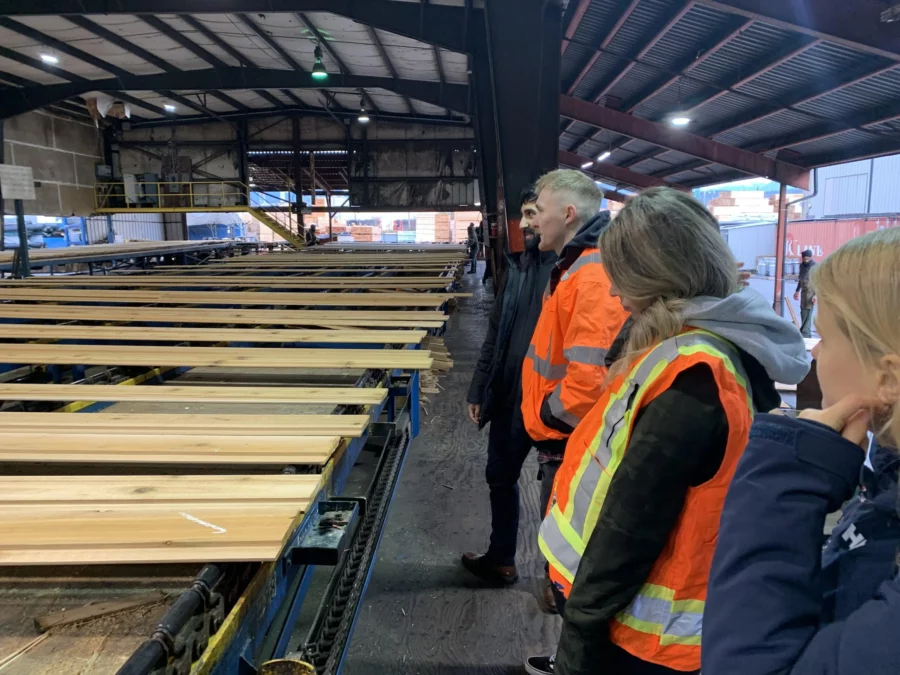What is a Lumber Trader?
The 10 Essential Roles of a Lumber Trader
The Importance of Lumber Trading
Dimensional lumber is the backbone of the construction industry, used extensively in residential, commercial, and infrastructure projects. As global populations grow, so does the demand for housing and infrastructure, driving the need for lumber. Additionally, the manufacturing sector relies on lumber for creating furniture, packaging materials, and many other products. Hence, the demand for lumber is sustained, making lumber trading a critical part of the supply chain.
What does a Lumber Trader do?
- Market Analysis
- Sourcing Lumber
- Sales and Marketing
- Price Negotiation
- Risk Management
- Logistics and Transportation
- Compliance and Regulations
- Relationship Management
- Market Forecasting
- Continuous Learning
What is a Lumber Trader?
A lumber trader is a professional who facilitates the buying and selling of lumber in the marketplace. Their role involves building and maintaining professional relationships and negotiating prices and sales with producers and consumers. With the right training and mentorship, a Lumber Trader has unlimited earning potential with a highly competitive compensation model. At Olympic Industries, Trader Trainees actively participate in an 8-12 month intensified training program to develop an in-depth understanding of the lumber trading industry.
Let's dive into the details of what a lumber trader does:
1. Market Analysis
One of the primary responsibilities of a lumber trader is to conduct market analysis. This includes monitoring supply and demand trends, tracking lumber prices, and staying updated on economic indicators that may influence the lumber market. Understanding market dynamics is crucial for making informed decisions and identifying potential trading opportunities.
2. Sourcing Lumber
Lumber traders work to source lumber from various suppliers, including sawmills, wholesalers, and distributors. They negotiate contracts and agreements with suppliers to secure the right lumber at competitive prices. Developing strong relationships with suppliers is essential for maintaining a steady and reliable supply chain.
3. Sales and Marketing
Lumber traders actively seek out potential buyers for the lumber they possess. This involves marketing their lumber stocks to construction companies, manufacturers, retailers, and other potential customers. The trader must understand the specific needs of different buyers and tailor their sales pitch accordingly.
4. Price Negotiation
Lumber traders negotiate prices with both suppliers and buyers. When buying lumber, they aim to secure the best possible price to maximize profits when selling it later. When selling lumber, they strive to obtain the highest price possible while remaining competitive in the market.
5. Risk Management
Lumber trading involves inherent risks, such as price volatility, changing demand, and supply disruptions. Traders need to implement risk management strategies to protect their investments and minimize potential losses. This may involve using futures contracts, hedging techniques, or other financial instruments.

6. Logistics and Transportation
Coordinating the transportation and logistics of lumber is another critical aspect of the lumber trading process. Olympic has a professional logistics team that handles the transportation of our lumber trades. They ensure that the lumber is efficiently transported from the supplier to the buyer, considering factors like shipping costs, delivery timelines, and handling procedures.
7. Compliance and Regulations
Lumber traders must comply with various industry regulations and trade policies. This includes adhering to sustainability and environmental standards when sourcing lumber, as well as ensuring that all international trade rules and customs procedures are followed.
8. Relationship Management
Building and maintaining strong relationships with both suppliers and buyers is vital for long-term success in lumber trading. Traders must communicate effectively, resolve any issues that arise, and ensure that both parties are satisfied with the trading process.
9. Market Forecasting
Lumber traders need to forecast market trends and anticipate changes in supply and demand. This requires a deep understanding of the lumber industry and the ability to analyze economic, political, and environmental factors that may impact the market.
10. Continuous Learning
The lumber industry is constantly evolving, with new technologies, regulations, and market dynamics emerging. Lumber traders must stay informed about industry developments, attend conferences and workshops, and continuously educate themselves to adapt to changing conditions.

A lumber trader plays a crucial role in the lumber trading industry, acting as an intermediary between suppliers and buyers. They analyze markets, source lumber, negotiate prices, manage risks, and ensure the efficient movement of lumber through the supply chain. A successful lumber trader possesses a combination of market expertise, negotiation skills, and a deep understanding of the lumber industry to navigate this career path.
Grow your career as a lumber trader with Olympic Industries, Check out our current opportunities


